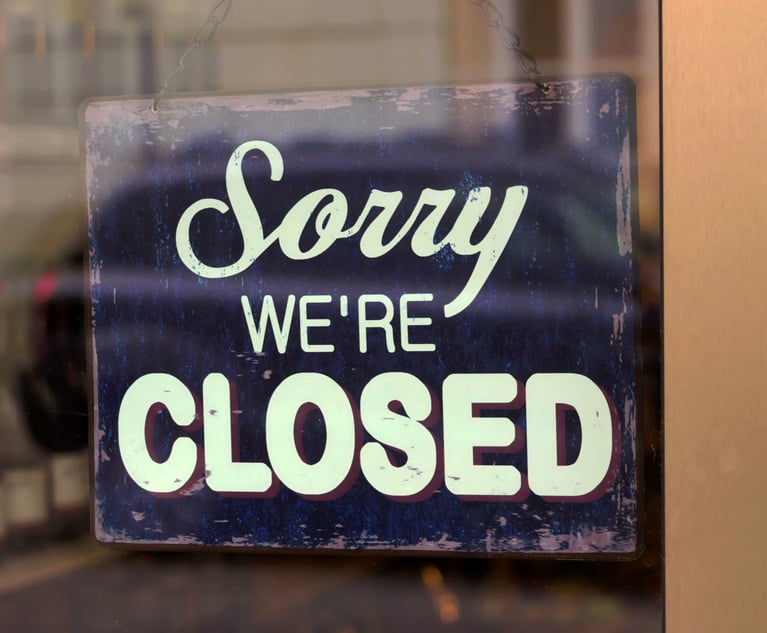Filters, Curse Words and 'Lessons Learned': Tips on Discovery Searches
The point of document review is not to review documents. The point of document review is to identify relevant documents for depositions, cross-examination, etc.
February 25, 2020 at 12:17 PM
5 minute read
 Todd Heffner of Jones Walker. (Courtesy photo)
Todd Heffner of Jones Walker. (Courtesy photo)
It's now common that a case involves more documents than attorneys can lay eyes on—or should lay eyes on—for cost, time or other reasons. If you cannot or should not look at every single document and want to find the best documents in the shortest amount of time, these tips and tricks will hopefully give you some ideas for finding the best documents. A couple of caveats first. One, before considering any particular strategy mentioned below, it's always important to understand why documents are being reviewed in the first place. Perhaps it's for relevance prior to production, privilege review or to find potential hearing exhibits. For each of these situations, context matters—and not every strategy works for each type of review—so keep the big picture in mind. That said, most of the suggestions in this article will best be applied to reviewing incoming productions and for identifying problem documents within your own client's documents.
Two, the point of document review is not to review documents. The point of document review is to identify relevant documents for depositions, cross-examination, etc. If the search or filter you are using is not producing results, stop. Refine your search, try something else. Remember, these strategies are designed to save you time and get you to the best documents quickly, they're not a box to check.
The first category of searching tips is arguably not a search in the Google sense, but can still be very effective: filtering. Filters you can apply include:
- Date—focus on when the key events happen;
- Custodian—only look at the documents from one person;
- Internal vs. external vs. third parties—the juiciest emails are usually only sent internally, so cut out the emails your client already received;
- Sent emails vs. received or copied—the emails a deponent sent are generally more effective to place in front of them than something they were copied on;
- Document type—perhaps all the key information is in PowerPoints and not email; and
- Folder path—particularly with nonemail sources, you may find a particularly helpful document, if so, take the time to look at all the other documents in that same folder.
The next category of searching tips are actually some searches you should consider; four examples follow:
- Keyword searching is perhaps the most obvious, but still worth considering—is there a key phrase or issue that will get you what you need? Be sure to update the terms as you go, especially if, for example, you learn of a regularly used abbreviation for one of the key terms you didn't know to use at first.
- Curse word searches can be highly effective. When things go wrong, many people throw professionalism out the window and curse in their emails.
- Similar to curse word searching, develop a list of negative-context words to search for. There are countless words that are only used when things go wrong. Some examples: issue, wrong, error, problem and oversight.
- It should become almost reflexive that you run a search for "lessons learned" in any business dispute. Also, be sure that you're searching within the file names and not just the text of the document when you run this search.
Other documents that should probably be reviewed in every case are those with redactions and those designated "confidential" or "attorney's eyes only" by virtue of a protective order (assuming of course the other side isn't taking the position that everything being produced is confidential). With both of these categories, you can request that the other side include an appropriate designation with the metadata it includes with its document production. Redacted documents should provide at least some sense of what issues the other side was sharing with its lawyers and when. Confidential or attorney's eyes only documents may not be helpful in every case but obviously will contain information the other side finds sensitive for one reason or another.
As mentioned above, if the searches or filters you are utilizing are ineffective, it's imperative that you either refine the search or move on to something else. Along those lines, one of the best ways to refine a search is to exclude documents. The more proficient you are with the technology you are using, the more sense it makes to determine a means of excluding certain documents instead of simply reviewing everything that came up with your original search. For example, you could find a phrase that would allow you to exclude all of the weekly reports that mention your client when you are really interested in the monthly reports that mention your client.
Finally, while beyond the scope of this article, there are technological tools that can be put to work as well. TAR, which was covered in January here and here, near duplicate recognition, and email threading. The latter two are separate means of having less documents to review, but still review all of the same content—more on those tools in a future article.
Todd Heffner is a construction litigator and eDiscovery specialist with Jones Walker in Atlanta.
This content has been archived. It is available through our partners, LexisNexis® and Bloomberg Law.
To view this content, please continue to their sites.
Not a Lexis Subscriber?
Subscribe Now
Not a Bloomberg Law Subscriber?
Subscribe Now
NOT FOR REPRINT
© 2025 ALM Global, LLC, All Rights Reserved. Request academic re-use from www.copyright.com. All other uses, submit a request to [email protected]. For more information visit Asset & Logo Licensing.
You Might Like
View All
A Plan Is Brewing to Limit Big-Dollar Suits in Georgia—and Lawyers Have Mixed Feelings
10 minute read

Law Firms Mentioned
Trending Stories
- 1Uber Files RICO Suit Against Plaintiff-Side Firms Alleging Fraudulent Injury Claims
- 2The Law Firm Disrupted: Scrutinizing the Elephant More Than the Mouse
- 3Inherent Diminished Value Damages Unavailable to 3rd-Party Claimants, Court Says
- 4Pa. Defense Firm Sued by Client Over Ex-Eagles Player's $43.5M Med Mal Win
- 5Losses Mount at Morris Manning, but Departing Ex-Chair Stays Bullish About His Old Firm's Future
Who Got The Work
J. Brugh Lower of Gibbons has entered an appearance for industrial equipment supplier Devco Corporation in a pending trademark infringement lawsuit. The suit, accusing the defendant of selling knock-off Graco products, was filed Dec. 18 in New Jersey District Court by Rivkin Radler on behalf of Graco Inc. and Graco Minnesota. The case, assigned to U.S. District Judge Zahid N. Quraishi, is 3:24-cv-11294, Graco Inc. et al v. Devco Corporation.
Who Got The Work
Rebecca Maller-Stein and Kent A. Yalowitz of Arnold & Porter Kaye Scholer have entered their appearances for Hanaco Venture Capital and its executives, Lior Prosor and David Frankel, in a pending securities lawsuit. The action, filed on Dec. 24 in New York Southern District Court by Zell, Aron & Co. on behalf of Goldeneye Advisors, accuses the defendants of negligently and fraudulently managing the plaintiff's $1 million investment. The case, assigned to U.S. District Judge Vernon S. Broderick, is 1:24-cv-09918, Goldeneye Advisors, LLC v. Hanaco Venture Capital, Ltd. et al.
Who Got The Work
Attorneys from A&O Shearman has stepped in as defense counsel for Toronto-Dominion Bank and other defendants in a pending securities class action. The suit, filed Dec. 11 in New York Southern District Court by Bleichmar Fonti & Auld, accuses the defendants of concealing the bank's 'pervasive' deficiencies in regards to its compliance with the Bank Secrecy Act and the quality of its anti-money laundering controls. The case, assigned to U.S. District Judge Arun Subramanian, is 1:24-cv-09445, Gonzalez v. The Toronto-Dominion Bank et al.
Who Got The Work
Crown Castle International, a Pennsylvania company providing shared communications infrastructure, has turned to Luke D. Wolf of Gordon Rees Scully Mansukhani to fend off a pending breach-of-contract lawsuit. The court action, filed Nov. 25 in Michigan Eastern District Court by Hooper Hathaway PC on behalf of The Town Residences LLC, accuses Crown Castle of failing to transfer approximately $30,000 in utility payments from T-Mobile in breach of a roof-top lease and assignment agreement. The case, assigned to U.S. District Judge Susan K. Declercq, is 2:24-cv-13131, The Town Residences LLC v. T-Mobile US, Inc. et al.
Who Got The Work
Wilfred P. Coronato and Daniel M. Schwartz of McCarter & English have stepped in as defense counsel to Electrolux Home Products Inc. in a pending product liability lawsuit. The court action, filed Nov. 26 in New York Eastern District Court by Poulos Lopiccolo PC and Nagel Rice LLP on behalf of David Stern, alleges that the defendant's refrigerators’ drawers and shelving repeatedly break and fall apart within months after purchase. The case, assigned to U.S. District Judge Joan M. Azrack, is 2:24-cv-08204, Stern v. Electrolux Home Products, Inc.
Featured Firms
Law Offices of Gary Martin Hays & Associates, P.C.
(470) 294-1674
Law Offices of Mark E. Salomone
(857) 444-6468
Smith & Hassler
(713) 739-1250







